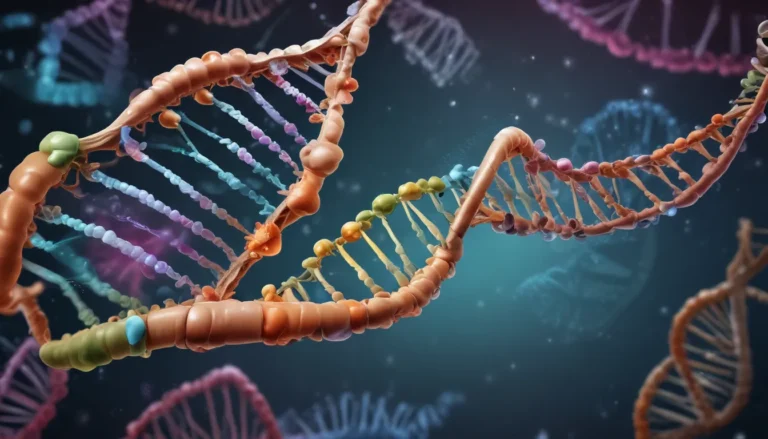A Note About Images: The images used in our articles are for illustration purposes only and may not exactly match the content. They are meant to engage readers, but the text should be relied upon for accurate information.
Welcome to the world of facilitated diffusion, a captivating biological process that allows specific molecules to traverse cell membranes with ease. Unlike simple diffusion, which relies on random molecular motion, facilitated diffusion employs specialized transporter proteins as gatekeepers, ensuring only essential molecules gain entry. In this article, we will delve into 16 extraordinary facts about facilitated diffusion, shedding light on its unique characteristics and the vital role it plays in cellular function. Whether you are a biology enthusiast or simply curious about the inner workings of cells, these fascinating facts will deepen your understanding and captivate your imagination.
Decoding the Magic of Facilitated Diffusion:
- Facilitated diffusion acts as a VIP entrance for crucial molecules, using specialized proteins as bouncers to maintain cellular health without requiring additional energy.
- This process resembles a well-organized transportation system, ensuring only the right molecules traverse cell membranes to maintain balance and functionality.
Nutrient Transport: The Heart of Facilitated Diffusion
Facilitated diffusion serves as the gateway for essential nutrients such as glucose and amino acids to enter cells, supporting various cellular processes vital for health and survival.
The Role of Transporter Proteins
Specific membrane proteins, known as transporters or carriers, are indispensable for facilitated diffusion, binding to and facilitating the movement of specific molecules across cell membranes.
Energy Efficiency at Its Best
Unlike active transport, facilitated diffusion is a passive process that operates without the need for cellular energy expenditure, making it a cost-effective and efficient mode of molecular transport.
Riding the Concentration Gradient
Facilitated diffusion capitalizes on the concentration gradient, allowing molecules to move from areas of high concentration to lower concentration regions, maintaining cellular equilibrium.
Swift Molecular Migration
By utilizing specialized protein channels, facilitated diffusion enables rapid and efficient movement of molecules across cell membranes, ensuring seamless cellular function.
Balancing Act: Regulating Saturation Levels
The rate of facilitated diffusion is finely tuned by the saturation levels of transport proteins. Once all transporters are engaged, the diffusion rate reaches its peak capacity.
Precision in Motion: Specificity of Molecules
Transport proteins involved in facilitated diffusion exhibit high specificity for certain molecules, guaranteeing the transport of only necessary substances.
Gatekeepers of Selectivity
The selective nature of facilitated diffusion allows cells to regulate the types and quantities of substances entering and exiting, ensuring precise control over cellular content.
Water Management: Osmotic Balance
By facilitating water molecule movement across cell membranes, facilitated diffusion aids in maintaining osmotic balance within cells, vital for cellular health and function.
Carrier Proteins: The Movers and Shakers
Facilitated diffusion relies on carrier proteins that undergo conformational changes to transport molecules across cell membranes efficiently and accurately.
Temperature’s Influence
The rate of facilitated diffusion is temperature-sensitive, with higher temperatures often resulting in faster diffusion rates, highlighting the impact of environmental conditions on cellular processes.
Opening Doors to Therapeutic Action
Facilitated diffusion allows for the passive entry of specific drugs and medications into cells, enabling their therapeutic effects and benefits.
Nerve Signals in Motion
Facilitated diffusion plays a pivotal role in the transmission of nerve signals by facilitating the movement of ions across cell membranes, essential for proper neural function.
Regulatory Wonders of Cellular Signaling
Cellular signaling mechanisms can modulate the rate of facilitated diffusion, offering dynamic control over molecular transport processes within cells.
Diverse Cellular Landscape
Facilitated diffusion is ubiquitous across various cell types, including nerve cells, muscle cells, and epithelial cells, showcasing its fundamental role in cellular functionality.
Waste Not, Want Not: Essential Waste Removal
Facilitated diffusion aids in the elimination of waste products from cells, safeguarding cellular health and preventing toxic accumulation.
In conclusion, facilitated diffusion stands as a remarkable process that underpins the efficient transport of specific molecules across cell membranes, essential for sustaining cellular and organismal function. Delving into the extraordinary facts about facilitated diffusion enriches our comprehension of cellular processes, unveiling the intricate mechanisms that support life’s vitality.
Unveiling the Marvels of Facilitated Diffusion
Facilitated diffusion offers a captivating glimpse into the world of cellular transport, showcasing a streamlined and energy-efficient mode of molecular movement essential for cellular vitality and function.
Embark on a journey of scientific discovery by exploring the extraordinary capabilities of embryonic stem cells, unrivaled in their potential to give rise to diverse cell types within the body. For a deeper exploration of cellular transport, unravel the mesmerizing facts surrounding active transport, a process that defies concentration gradients through energy-consuming carrier proteins.
FAQs for Curious Minds:
Q: What is facilitated diffusion?
A: Facilitated diffusion is a passive transport mechanism where molecules move across cell membranes with the aid of specific carrier or channel proteins.
Q: How does facilitated diffusion differ from simple diffusion?
A: Facilitated diffusion necessitates the involvement of carrier or channel proteins to facilitate the movement of select molecules, unlike simple diffusion where molecules move freely across membranes.
Q: What are carrier proteins?
A: Carrier proteins are integral membrane proteins that bind to specific molecules, enabling their transport across cell membranes through conformational changes.
Q: What are channel proteins?
A: Channel proteins are integral membrane proteins that form pathways for specific molecules to traverse cell membranes, aiding in their transport.
Q: What molecules undergo facilitated diffusion?
A: Various molecules, including glucose, amino acids, ions, and water, undergo facilitated diffusion, driven by the specificity of carrier or channel proteins.
Embark on a journey of discovery and unravel the wonders of facilitated diffusion, a captivating realm essential for cellular harmony and vitality. Dive deeper into the intricate world of cellular transport and unlock the secrets that fuel life’s remarkable processes.
Include a corresponding meta description (~155 characters) for SEO optimization:
Uncover the extraordinary world of facilitated diffusion with these 16 fascinating facts. Explore the secrets behind cellular transport in this compelling journey of scientific discovery.





